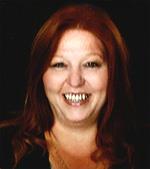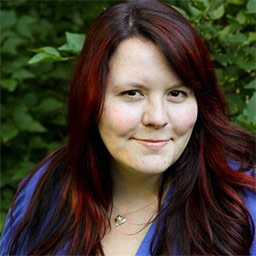Luanne Paulson needed a change. As a 52-year-old certified nursing assistant (CNA) at a long-term care facility, she realized that the long, and often inconsistent, hours of hands-on work with patients was too physically demanding and wondered if there was another career path for her.

Paulson is now a Lake Elmo medical assisting student at Rasmussen College with two quarters until her associate’s degree is complete.
Paulson’s path wasn’t an easy one. She endured the loss of her son in a fatal car crash; she sacrificed her time – and finances! – to participate in a 240-hour externship; and she thrived in a busy clinic environment.
She did all of that to keep a promise she made to herself two years ago. Now, with two quarters to go before graduation, Paulson is looking toward a bright future as a medical assistant.
Here is her story.
Decision to earn a degree
Paulson became interested in caring for others at an early age and has worked in the healthcare field for 20 years.
“I was always the family nurse,” Paulson says. “I didn’t freak out when someone was bleeding.” She decided not to become a nurse despite an early interest, choosing first to become a veterinary technician and eventually a CNA. Becoming a medical assistant would bring together her hands-on and administrative skills.
So Paulson researched the scope of practice of a medical assistant and decided she liked the variety of tasks performed and the cultural diversity she’d be able to see in a clinic.
Paulson then moved on to researching local colleges and universities to decide which school was best for her. She found Rasmussen College to have the “most comprehensive” program because the school offers both a diploma and associate’s degree is offered in addition to hands-on experience in the field.
So Paulson decided to enroll – even though the Lake Elmo campus is 50 miles from her Cushing, Wis. home.
Through everything, Paulson credits her three sons for pushing her to earn a medical assisting degree. Her second son, Jon, was particularly supportive and even decided to earn his degree, too. But a fatal car crash in the summer of 2012 brought his dream to an end – and nearly ended Paulson’s, too.
“I thought about quitting,” she says. “But I knew that would let (Jon) down.” So she kept on, though the pain of losing her son is still present after nearly a year. “Regardless of everything that happened, I had to go on.”
From classroom to the clinic
Every medical assistant student at Rasmussen College must complete a 240-hour externship at a medical facility. The college sets up the externship, but a student’s placement depends upon facility needs. Though Paulson didn’t need to interview with her facility, some students do.
Paulson worked with University of Minnesota Physicians in Minneapolis for six and a half weeks in the spring of 2013, tackling the normal duties of a medical assistant – blood draws, injections, scheduling patient appointments, directing patients to the exam rooms, managing electronic health records and measuring vital signs made up the majority of her daily tasks.
Working with real patients as a student might sound nerve-racking, but Paulson said that wasn’t the case for her thanks to classroom experience. Practicing blood draws on classmates was a common occurrence, so her first blood draw at her externship clinic went well.
“Once I got into actually drawing the blood, I just cleared my mind like I did when I was in the classroom and said, ‘You can do this, Luanne,’” Paulson says. “(Instructors taught me that) to appear confident, you have to focus on what you’re doing rather than who you are doing it with, so your skills will compensate for any nervousness you might have.”
The advantage of participating in an externship is that it tests your newfound classroom knowledge not on an exam, but in a functioning medical facility. Paulson found the break-neck pace of the clinic environment harrowing at first. Eventually, keeping up with the pace of the clinic became second nature to her.
Leveraging financial responsibility
But for Paulson, earning her degree has taken more than just adjusting to the pace of a clinic and being confident working on live patients, it has taken sacrifice. Time management and planning ahead are crucial to her continued success in the program.
Thanks to her research, Paulson knew what she was getting into – both the financial and time commitments – before she started the program. The externship is unpaid and Paulson chose to focus on her externship rather than trying to balance school, training and her full-time job.
“I knew that school would require a huge commitment on my part,” she says. As soon as she found out about the externship part of the program, she started to plan her finances. Paulson set up a separate bank account into which $100 from each paycheck was automatically deposited.
Setting aside money each week was a sacrifice. Paulson wasn’t able to go out to dinner as often or spoil her grandchildren quite as much. But it was worth it.
“When my externship came up 18 months later, I had the funds to live,” she says. “I planned for it so I wouldn’t have that huge financial burden to worry about.”
Looking to the future
Paulson is eager to start her new career as a medical assistant, and she’s confident that her externship experience will make her a well-rounded job candidate – eventually.
Before applying to jobs Paulson plans to finish her degree, pass the medical assisting certification exam and become a certified medical assistant. She’s looking forward to hours like she worked in her externship, 8:30 a.m. to 4:30 p.m., instead of the night shift and every other weekend she works at her current job.
Paulson’s final piece of advice for future students: Be open to learning at your externship, ask for the opportunity to take part in things that are new to you and speak up if you don’t understand something.
If you’re interested in earning a medical assisting degree in Lake Elmo, be sure to check out our degree page to learn more about the program.




